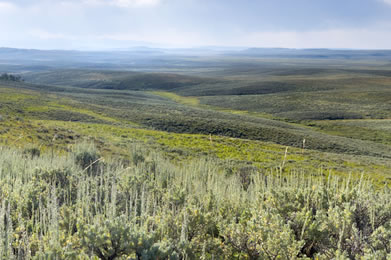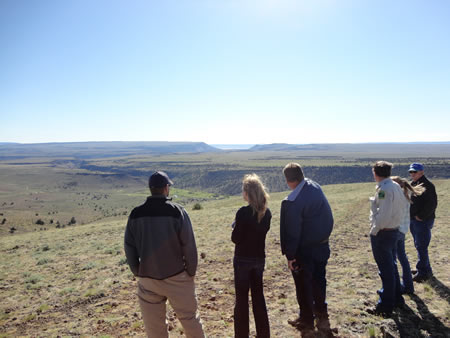What’s Large?
What do we mean by a large landscape? Home ranges may be more than 600 square kilometers or 230 square miles. A township is 36 square miles to give you an idea. Washington, D.C., is only 68 square miles!
Not all sage grouse home ranges are similar. Where birds can find all their seasonal needs relatively nearby, they don’t have to move too far. However, lengthy migrations between seasonal ranges make their large landscape needs much greater.
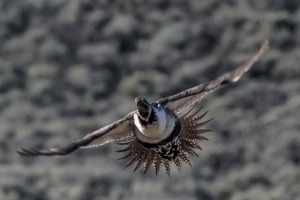 Longest Migration
Longest Migration
The longest known migration of sage grouse connects birds from Grasslands National Park in Saskatchewan, Canada, to the Charles M Russell National Wildlife Refuge in Montana, a 100-mile one-way trek. Read more about that amazing migration.
Unlike waterfowl that can fly for miles and descend to wetlands for refuge, sage grouse hopscotch across sagebrush country – walking and flying. They are so wary of disturbances that highways, power lines, tilled fields and other developments become difficult obstacles.
That’s why conserving sage grouse habitat requires thinking big, acting big, and keeping the best of the best large landscapes intact across public and private lands, where ranchers, too, depend on big connected lands for their prosperity and future.
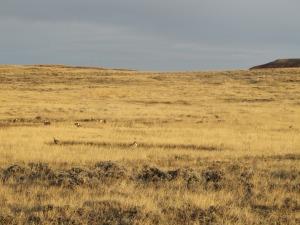 What’s Intact?
What’s Intact?
Sage grouse do best with very little human disturbance. In fact, new 2013 research by USGS sage grouse scientist Stephen Knick shows that 99 percent of active leks (breeding areas) are in areas with less than 3 percent of development. Knick looked at 3,000 leks within a 355,000 square-mile portion of the sage grouse historic range. Lands surrounding the active leks shared similar characteristics – broad expanses of sagebrush and less than 14 percent developed. The factors examined in a 3-mile radius of each lek were climate, land cover, and densities of roads, power lines, pipelines, and communication towers.
A Sage Grouse Initiative analysis (in press) of how invasive conifers affect sage grouse also shows that a very low tolerance of invading junipers or pinyons near leks. After canopy cover exceeded 4 percent, no leks in the study remained active. The authors evaluated 152 leks across four million acres of sage grouse habitat in eastern Oregon.
The good news is that armed with knowledge of the bird’s needs, conservation practices are making a difference – from strategically removing conifers near leks to states like Wyoming enacting core policies that limit development in areas of high sage grouse populations. SGI in 2013 released a video about the Wyoming example.
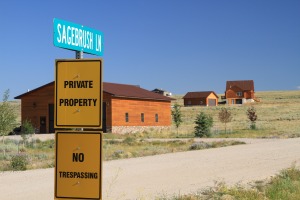 What’s Complex?
What’s Complex?
Sage grouse may look like birds with simple habitat needs. After all, they’re named for the plant that sustains them most — sagebrush. On closer look their life cycles reveal much more complexity. That helps explain why their numbers have slipped so drastically from millions in pre-settlement days to about 200,000 today. In some cases, habitats are gone – plowed under, or developed. In others, habitats are missing some of the key components.
A Habitat for Every Season
To understand complexity, take a look at sage grouse habitat in every season.
Spring
 Leks and nesting habitat go together
Leks and nesting habitat go together
The famed courtship dance of groups of male sage grouse takes place on leks that are close to potential nesting spots. A lek is the sage grouse version of a dance hall in the plains – a fairly small open area surrounded by sagebrush. The word lek comes from the Swedish “to play.”
A lek might be an old lakebed, a low sagebrush flat with excellent visibility, a ridgetop with little vegetation, even a landing strip, road, cropland or burned area. Males may return to the same traditional lek site year after year, and generation after generation. But the birds are also opportunistic, and will start a new lek if conditions are right.
Nesting Habitat
The key lies in proximity to nesting habitat. Sage grouse hens look for sagebrush that’s typically from 29 to 80 cm high (1 to 3 feet high). They scrape out a hollow for a nest under the tallest sagebrush within a stand. The more hidden the nests are the better chance of the chicks surviving. The birds also favor sagebrush with tall and dense grasses, too – one more barrier to predators like ravens and coyotes.
Once the chicks hatch, hens raise their broods in nearby upland sagebrush. The early brood-rearing habitats are more open with a mix of sagebrush, grasses and forbs. The best habitats have a rich diversity of plants with many forbs and insects. A study in Oregon found sage grouse chicks ate 34 genera of forbs and 41 families of invertebrates. The chicks particularly favor ants and beetles.
Summer

A sage grouse chick can walk upon hatching.
Raising chicks
As the chicks grow in the summer, their sagebrush habitats start to dry out. The broods look for wetter sites in June and July. The hens and chicks may show up in a variety of habitats – small burned areas within the sagebrush, wet meadows, farmlands and irrigated lands near sagebrush.
Fall
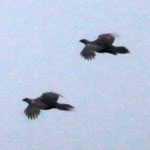 Slowly heading toward winter ranges
Slowly heading toward winter ranges
From late August to December most sage grouse are meandering toward their winter range – places with less snow and plentiful sagebrush for food and cover. Most birds have left their summer ranges by October. En route, the birds take advantage of a variety of sagebrush grassland habitats.
Winter
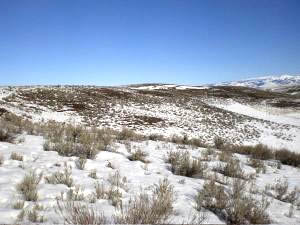 Sagebrush is the key
Sagebrush is the key
Sage grouse in winter must find sagebrush to survive – switching to a sagebrush leaf diet entirely. The birds move to areas with sagebrush that covers approximately 10 to 40 percent of the range. Where snow is a factor, it’s important that sagebrush be tall enough for the plants to be accessible. Shrubs also offer shelter from storms and frigid temperatures.


